This feature is currently in beta phase. If you would like to test it, please contact us in the chat and we will activate your Lime Connect account.
The Workflow feature of Lime Connect enables the visual creation of chatbot flows without programming knowledge. Our tutorial provides an overview of the most important functions and components.
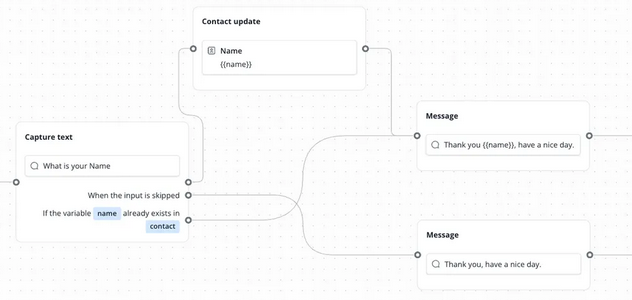
Setup
Open your chatbot overview under Team > Chatbots to create a new chatbot using the Workflow feature.
- Add a new chatbot using the blue button.
- Give your bot a name, assign it to an operator group, and choose a behavior mode.
- Select "LOGIC" as the bot type.
- Save the chatbot.
- Back in the chatbot overview, click on the name of the chatbot you just created.
- Scroll down and open the Workflow feature via the blue button.
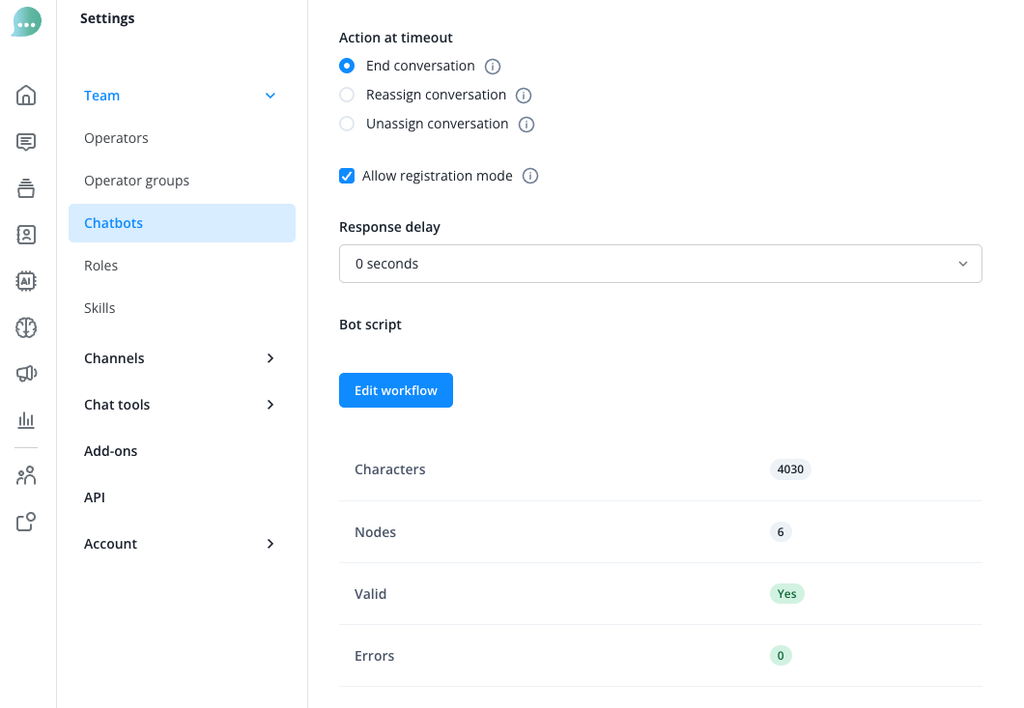
The Workflow feature is now opened. We have already set up the start command for the chatbot flow for you. The node menu with the various chatbot elements is open on the left side.
Explanation of Individual Functions
You can save or cancel your workflow in the top right:

If you have created an extensive workflow, you can use this button to adjust the workflow to the size of the canvas and automatically arrange it in the best possible way:

Using the menu at the bottom, you can zoom in or out of the view and maximize the current node view so that all used nodes are visible.

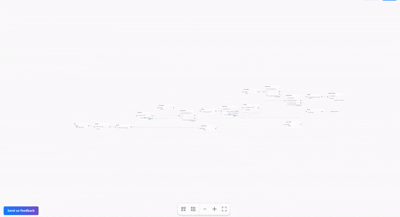
Open the node menu by clicking on the following icon:

The node menu contains all elements that you can use for your chatbot.
A node refers to a specific element or a fixed defined step in your chatbot flow.
Select the desired node with a click, then drag the node onto the canvas using drag-and-drop.
The canvas is the visual workspace where you create your chatbot flow and connect the nodes with each other.
As soon as you have placed the desired node, the appropriate window for configuring the node opens on the right side.
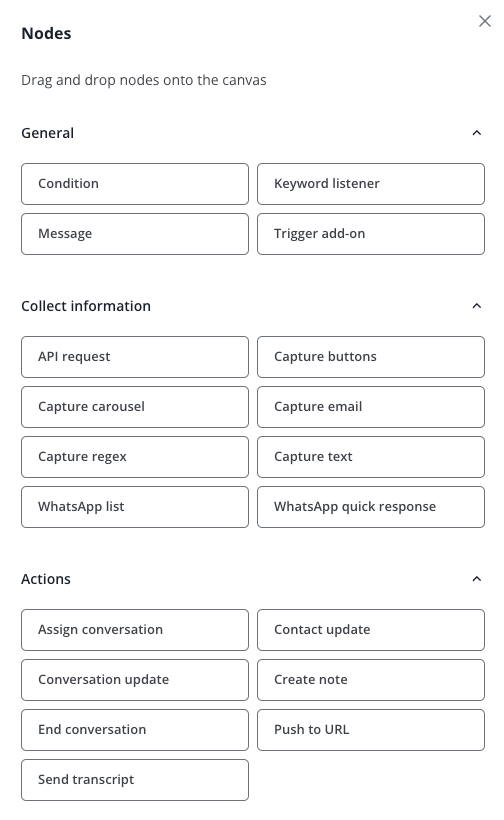
Variables
In some of the available nodes, you can use variables to store the contact's inputs in the background for the duration of the chat. For example, you can ask for the contact's name and then use it later, such as to save the name in the contact profile.
If you want to use the data stored in the background beyond the chat, you can use additional nodes, e.g., to update or supplement the contact profile data.
When using variables, make sure they are uniquely named and that you pass variable contents using double curly brackets
{{variable}} when using them elsewhere. You can find an example here.Nodes
We explain the different nodes on the following subpages:
 General nodes
General nodes Collect Information nodes
Collect Information nodes Actions nodes
Actions nodesExplanation of Connections
Connect the individual nodes with each other by linking the connection points with your mouse through clicking and dragging. Note that some nodes require various connections, e.g., to cover a skipped input or to connect different paths depending on the contact's selection.
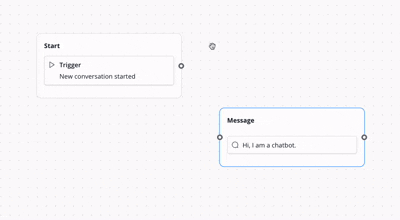
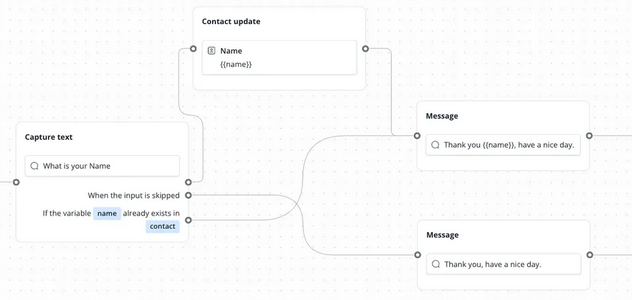
Example
In our example, we show you a short, simple workflow that only asks the contact for their name and saves it in the contact's Lime Connect profile. In case the contact does not provide their name, an alternative text is played (without mentioning the name in the farewell).

